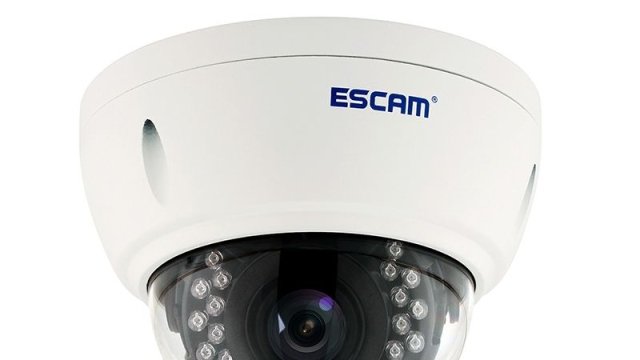
In recent years, the concept of security has transformed dramatically, with technology playing a pivotal role in enhancing our safety. Security cameras have emerged as a crucial tool in this evolution, providing an extra set of eyes that monitor and protect both public and private spaces. From bustling city streets to quiet residential neighborhoods, these cameras have become an integral part of our landscape, reassuring us that help is always within reach.
The advent of advanced surveillance technology has not only improved the effectiveness of security cameras but also made them more accessible to the average consumer. With various features such as high-definition video, motion detection, and remote access via smartphones, security cameras have revolutionized the way we think about safety. As we explore the impact of these devices on our daily lives, it becomes clear that security cameras serve not only as deterrents against crime but also as valuable tools for law enforcement and community vigilance.
The Evolution of Security Cameras
The journey of security cameras began in the 1940s with the development of closed-circuit television (CCTV). Initially, these cameras were used primarily for monitoring and surveillance in essential locations like banks and government buildings. The technology was rudimentary, relying on analog signals transmitted to a limited number of monitors. However, this marked the beginning of an industry that would grow exponentially in the following decades as public and private security needs intensified.
As the technology progressed, the introduction of video tape recorders in the 1970s allowed for footage to be recorded and stored, significantly enhancing the capabilities of security cameras. This advancement meant that security personnel could review footage after incidents occurred, improving response strategies and reinforcing safety measures. The incorporation of motion detection technology in the 1980s further amplified the effectiveness of security cameras by allowing for more efficient monitoring and reducing the burden on human operators.
The digital revolution in the 1990s transformed security camera systems once again. The shift from analog to digital cameras enabled higher-resolution images and easier integration with computer networks. This opened the door for remote monitoring and the rise of IP cameras that could be accessed via the internet. As a result, security cameras became more prevalent not only in commercial settings but also in residential areas, drastically changing how individuals and organizations approach safety and surveillance in their environments.
Impact on Crime Prevention
Get More Information
The presence of security cameras has a significant impact on crime prevention, acting as a deterrent for potential offenders. When individuals recognize that their actions are being monitored, they are less likely to engage in criminal activities. This effect can be particularly pronounced in public areas, such as parks, streets, and commercial districts, where the visibility of cameras creates an expectation of oversight, ultimately leading to a reduction in incidents such as vandalism, theft, and violence.
In addition to deterring crime, security cameras enhance response times for law enforcement. With cameras capturing real-time footage of suspicious behavior or criminal acts, police can act more quickly and effectively. The ability to review recorded footage provides crucial evidence that can lead to arrests and prosecutions, further supporting the notion that security cameras contribute to a safer environment. Communities equipped with surveillance technology often report increased collaboration between citizens and law enforcement, fostering a culture of shared responsibility for safety.
Moreover, the analytical tools developed for security camera systems, such as facial recognition and motion detection, add another layer of proactive crime prevention. These advanced technologies allow for the identification of known offenders and the immediate notification of law enforcement when unusual activities are detected. As cities and businesses continue to adopt these innovative systems, the overall capability to prevent crime will likely improve, leading to more secure public and private spaces.
Privacy Concerns and Ethical Considerations
As security cameras become more prevalent in both public and private spaces, concerns about privacy have emerged as a significant issue. The widespread installation of these devices raises questions about the extent to which individuals can expect privacy in their daily lives. Many people feel uncomfortable knowing they are being constantly monitored, and this unease can lead to a sense of surveillance that impacts personal freedoms and freedoms of expression. The challenge lies in balancing the need for security with the right to privacy, creating a complex ethical landscape.
Another important aspect to consider is the potential for misuse of footage captured by security cameras. Without proper regulations and oversight, recorded data can be exploited for voyeuristic purposes or even manipulated to misrepresent events. This has led to calls for stringent guidelines on who can access the footage and how it is used. Ensuring that security camera systems operate transparently and ethically is crucial in maintaining public trust and preventing abuse of the technology.
Furthermore, there is a growing concern about the implications of surveillance technology on marginalized communities. These groups often face disproportionate levels of monitoring, reinforcing existing inequalities and fostering an environment of distrust. It is essential for policymakers and organizations to address these disparities by implementing fair policies that consider the rights and experiences of all individuals. Ultimately, finding a solution that respects privacy while enhancing security remains a pressing challenge in our increasingly monitored society.


